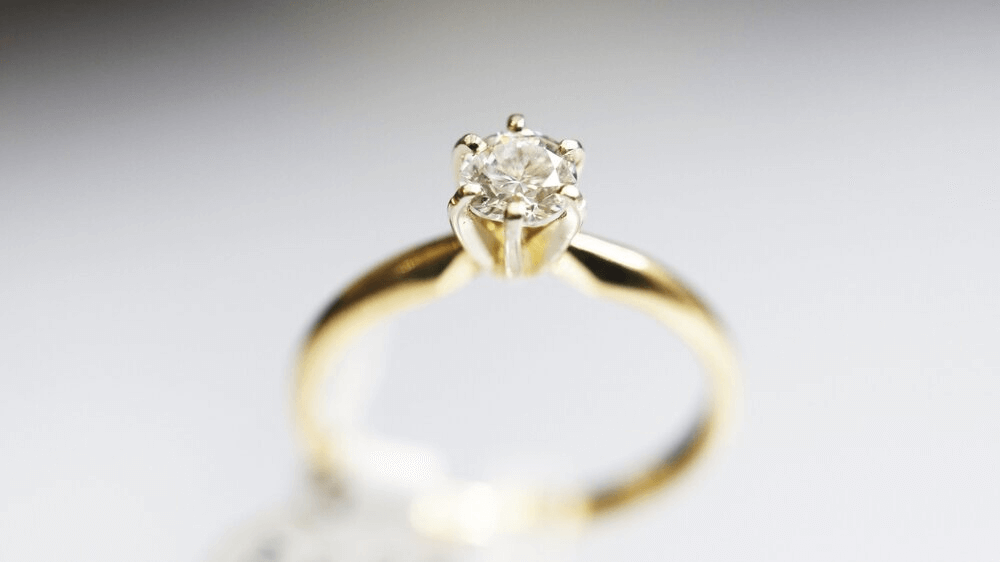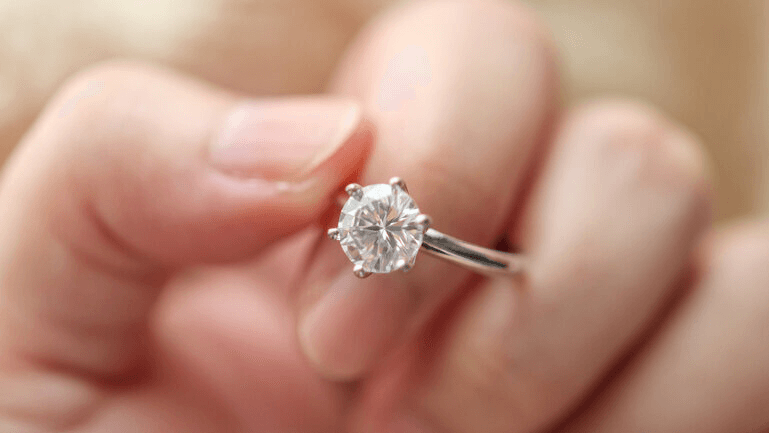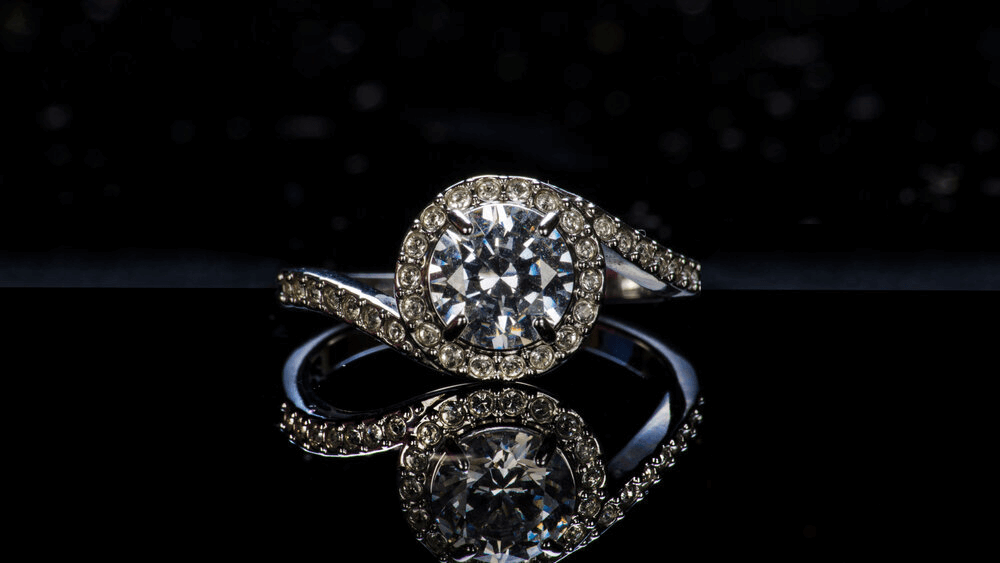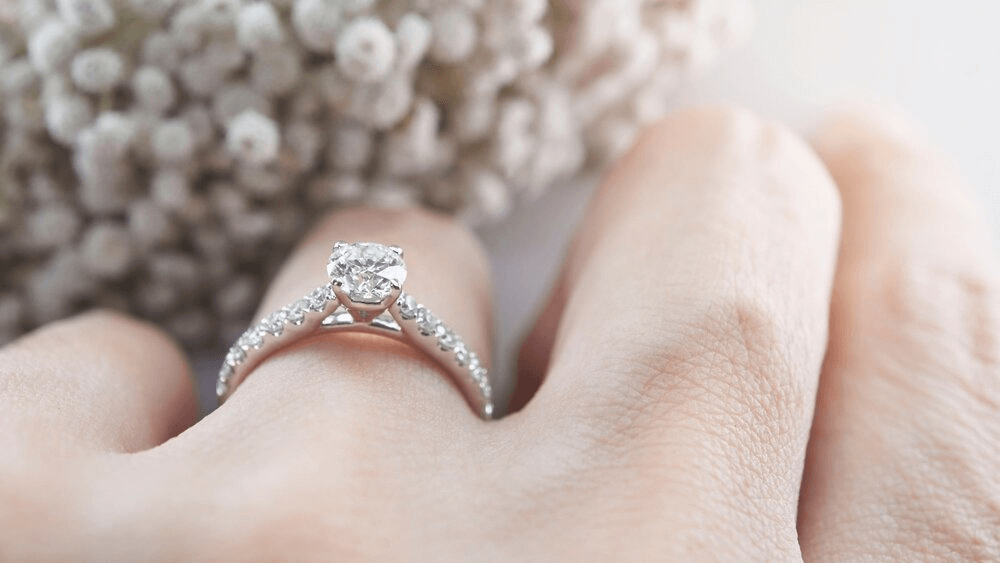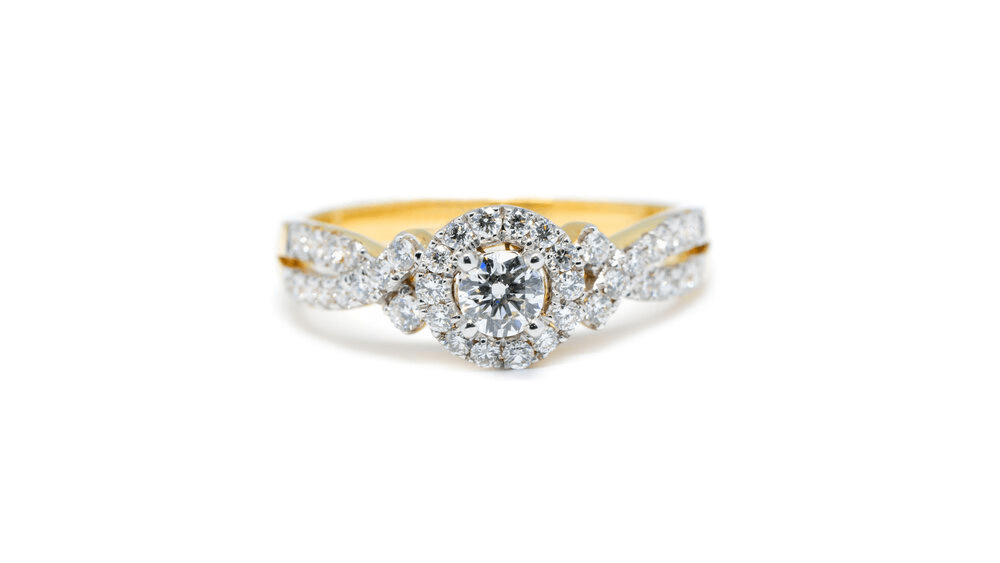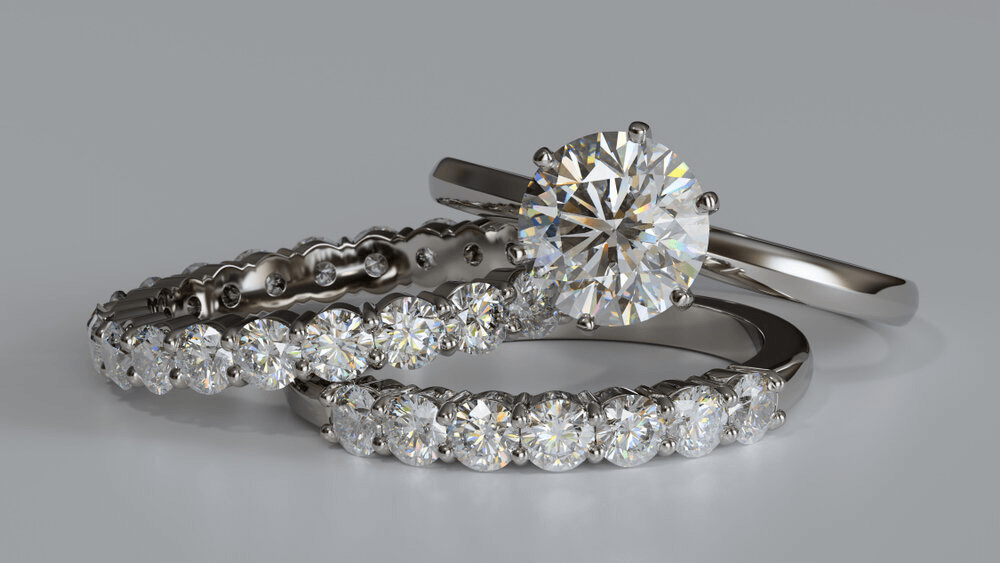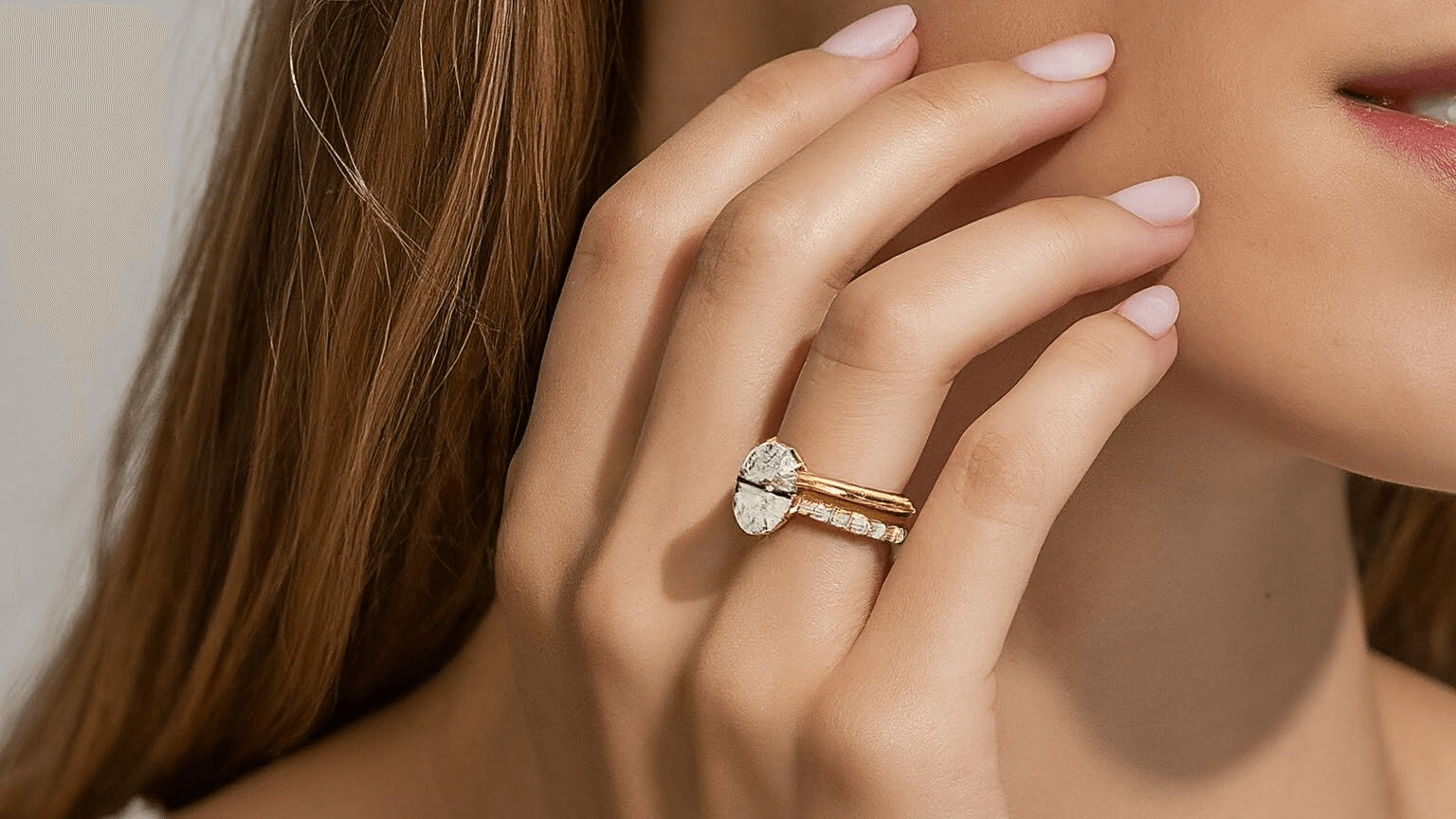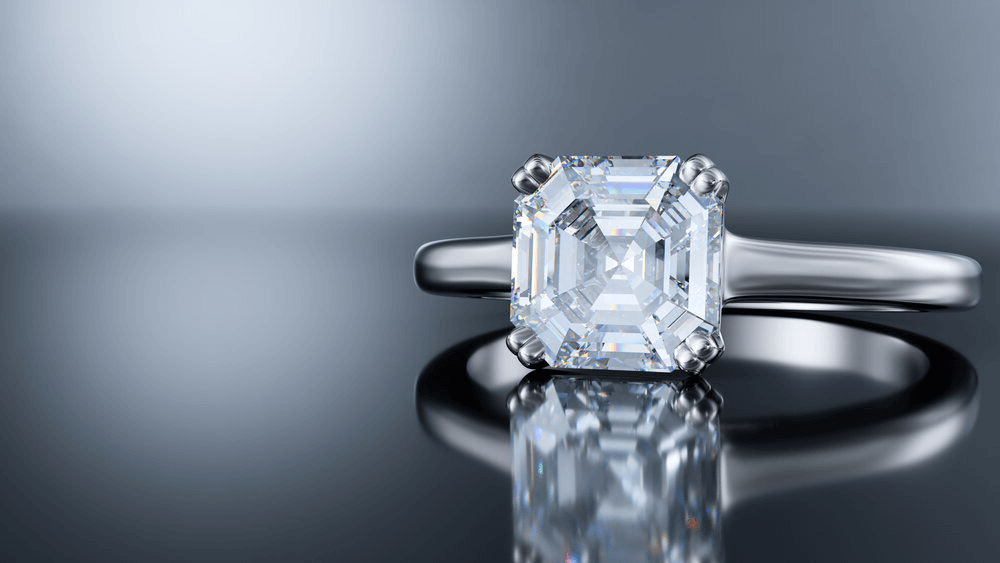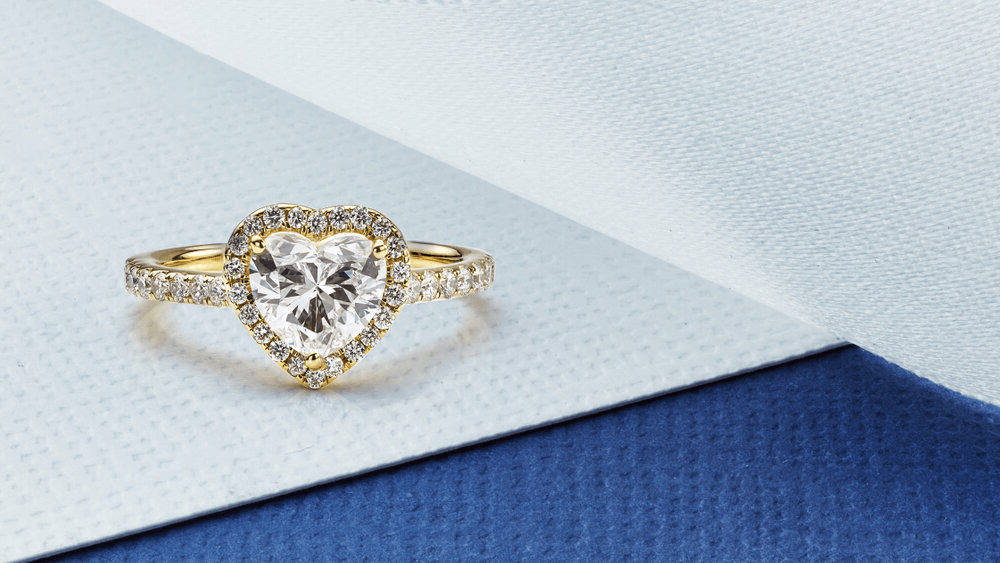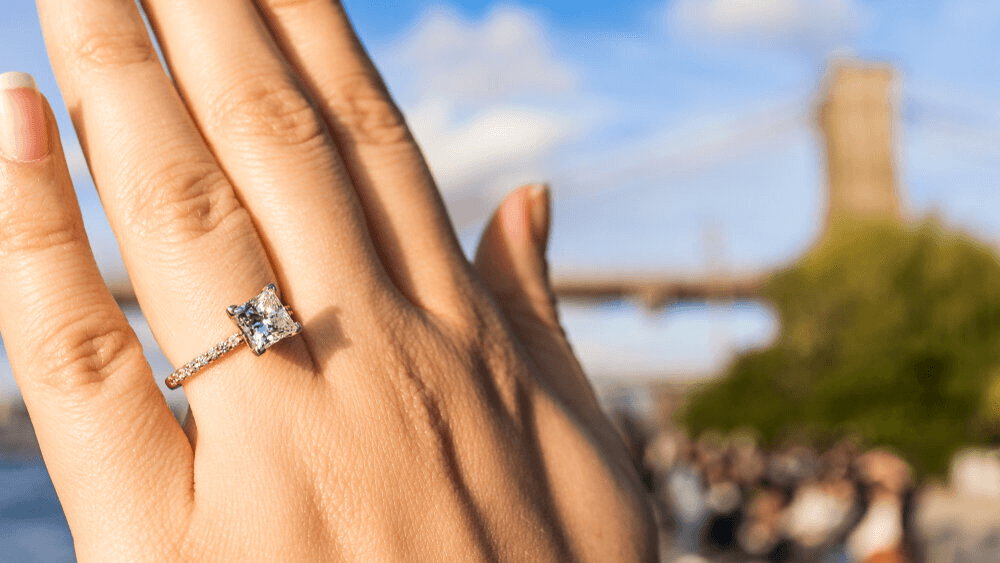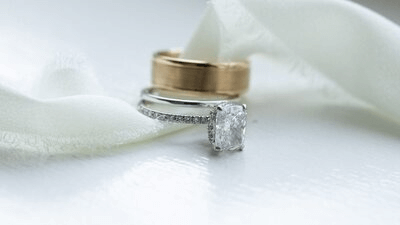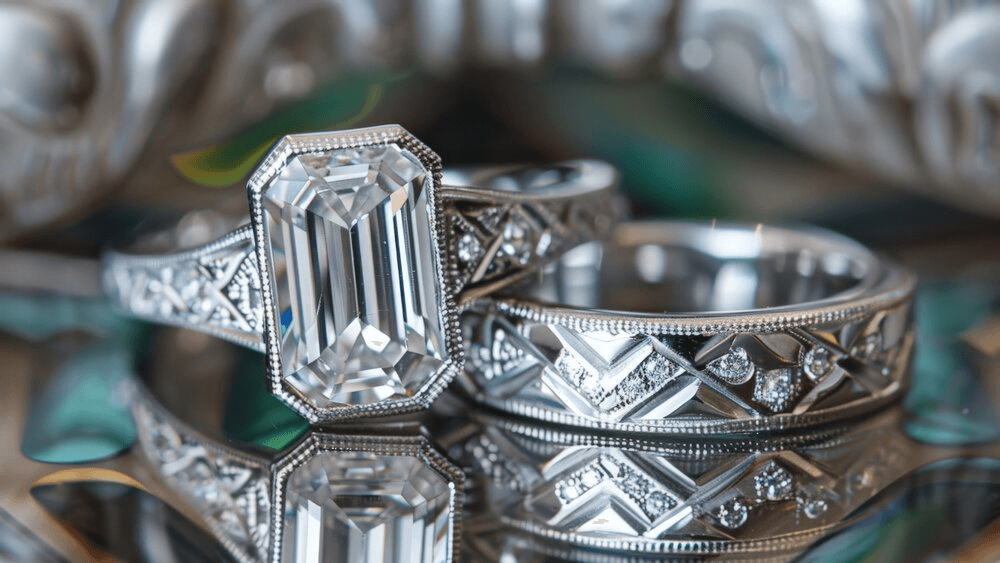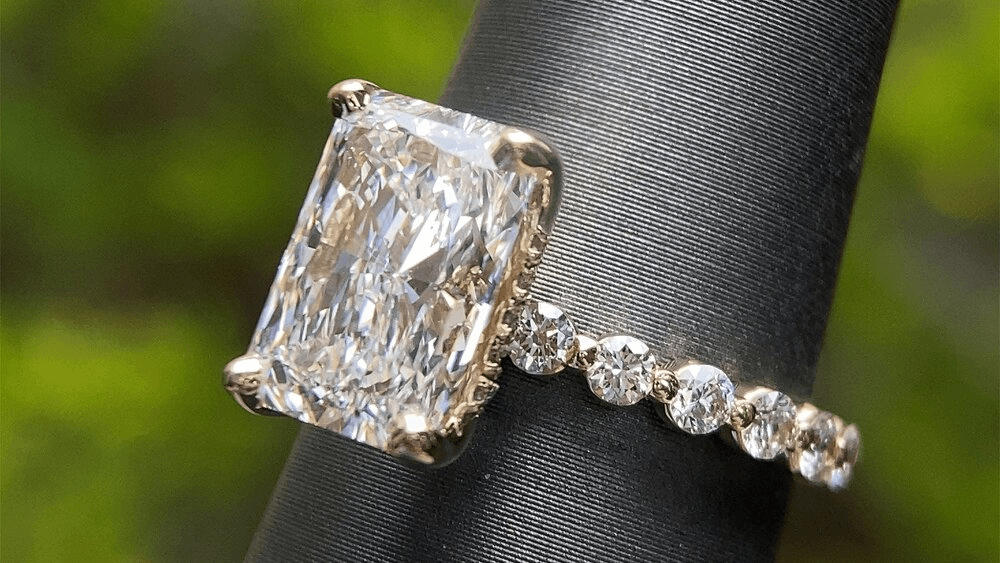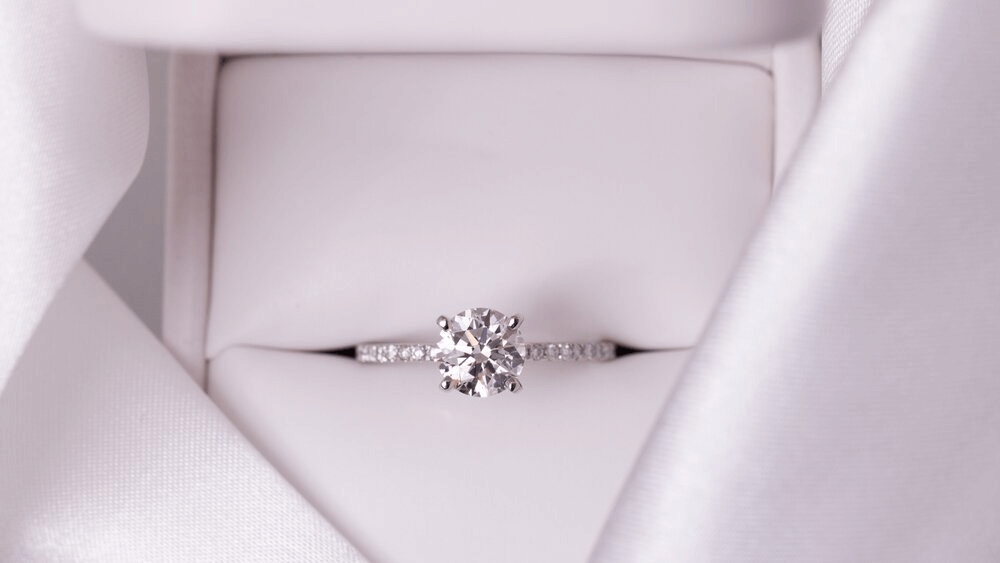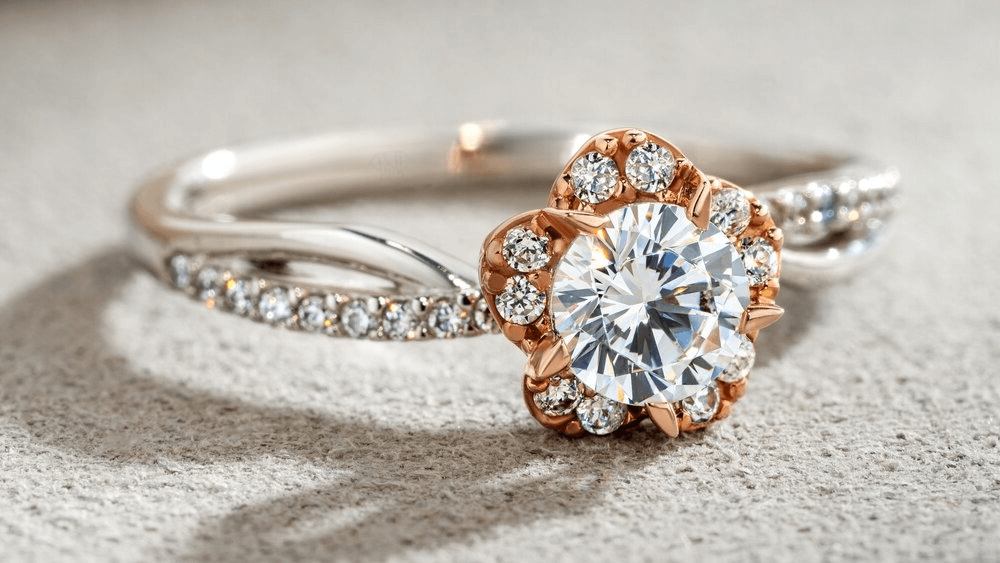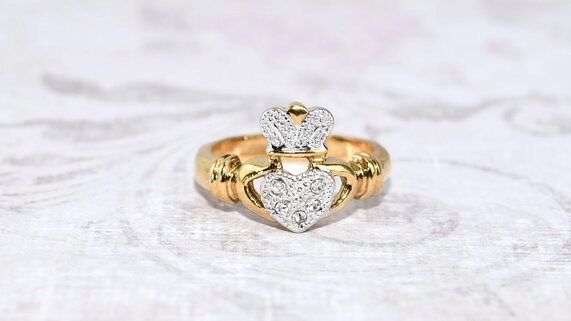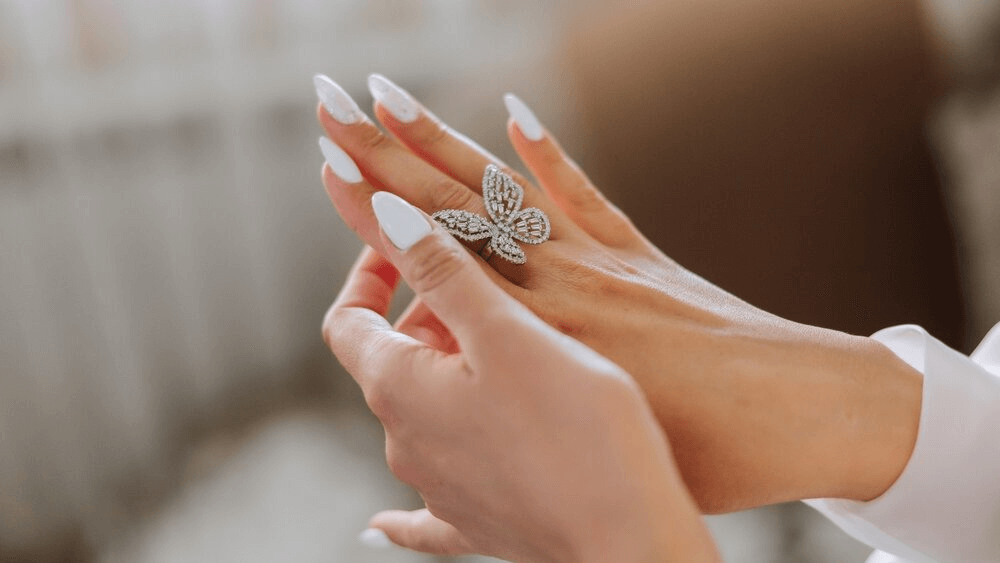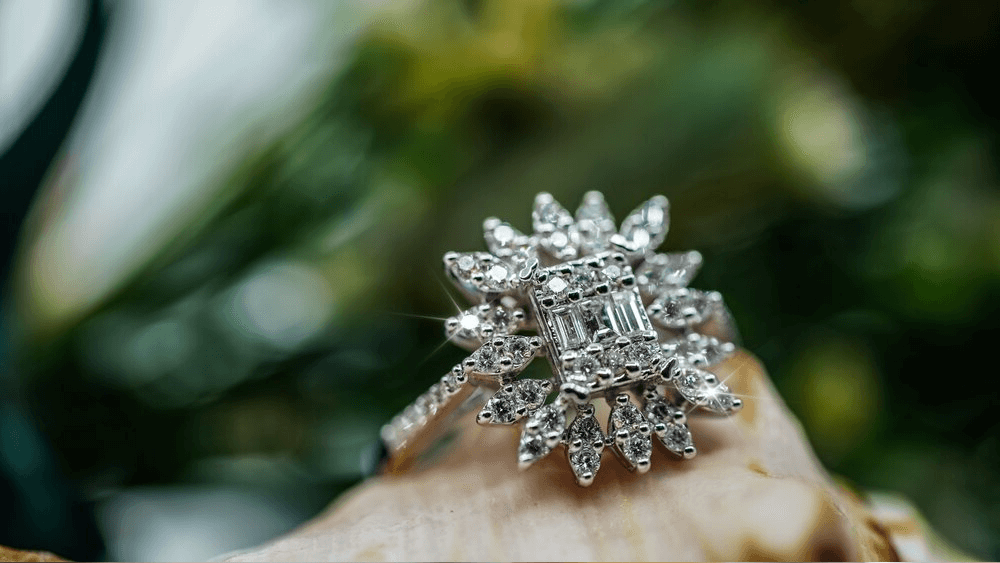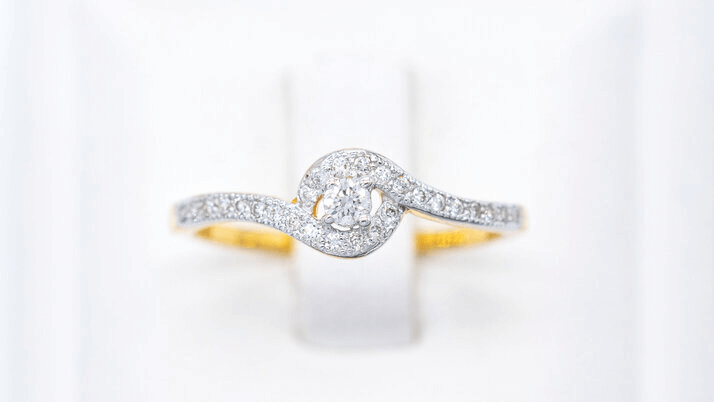Basket vs Prong Setting: Which One is Best for Your Ring?

By Gary A.

Edited by Olivia H.
Published Aug 13, 2024
Edited on Dec 23, 2024
Understand the differences between Basket and Prong settings for your engagement ring and find the style that suits your needs with this comprehensive guide.

Navigate this guide:
- 7 Quick Tips for Choosing Between the Prong Setting and Basket Setting
- Introduction to Engagement Ring Settings: Basket vs. Prong
- Deep Dive: Basket Setting Explained
- Unraveling the Prong Setting
- Comparative Analysis: Basket vs. Prong Setting
- Our Expert Take
- 9 Frequently Asked Questions: Basket Setting vs. Prong Setting
Before we dive deeper into the specifics, here are some practical tips to help guide your decision-making process:
7 Quick Tips for Choosing Between the Prong Setting and Basket Setting
Tip 1: Security of the Stone:
- Prong Setting: Ensure that the prongs are evenly spaced and securely holding the diamond. A poorly made prong setting can result in the diamond becoming loose or even falling out.
- Basket Setting: Check that the basket securely cradles the diamond. The basket should be well-constructed to provide adequate support to the stone.
Tip 2: Visibility and Brilliance of the Diamond:
- Prong Setting: Typically allows more light to pass through the diamond, enhancing its brilliance. However, the number of prongs can influence this. Four prongs might allow more light than six prongs, but six prongs can be more secure.
- Basket Setting: While it offers more protection to the stone, it might limit the amount of light entering the diamond, potentially reducing its sparkle.
Tip 3: Maintenance and Cleaning:
- Prong Setting: Dirt can accumulate between the prongs, so regular cleaning is essential. Also, over time, prongs can wear down or become bent, so periodic checks by a jeweler are recommended.
- Basket Setting: The design might trap more dirt and debris, so ensure you clean it regularly to maintain the diamond’s sparkle.
Tip 4: Aesthetic and Style:
- Consider the visual appeal of both settings. Some people prefer the minimalistic look of prongs, while others might appreciate the added design elements of a basket setting.
Tip 5: Lifestyle Considerations:
- If you or your partner lead an active lifestyle or work with your hands frequently, you might want to consider how the setting might catch on things. A basket setting might offer more protection in such cases, while prongs might get caught in fabrics more easily.
Tip 6: Future Resizing and Adjustments:
- Think about the possibility of future adjustments. Some settings are more flexible for resizing or modifications than others.
Tip 7: Budget:
- While the diamond often accounts for the majority of an engagement ring’s cost, settings can also vary in price. Ensure the setting you choose aligns with your budget while meeting your quality and aesthetic preferences.
Now that you’ve got these practical tips, use Jeweler AI below to find the perfect engagement ring that suits your style and budget:
Introduction to Engagement Ring Settings: Basket vs. Prong
Think of your diamond like the tip of an iceberg. All be it it’s a very beautiful, very expensive, very impressive tip of an iceberg, but it’s one part of a ring, and a lot more is going on just beneath the surface (or, in this case, just beneath the crown and girdle.
The elements that hold your diamond in place are incredibly important, not just structurally, but in terms of design and aesthetics to. The slightest change can have a big impact on the ring’s overall vibe, and the type of person it suits.
One of those small but mighty elements is the way in which the centre setting holds the diamond in place. A lot of people find themselves weighing up the differences between a traditional prong setting and a basket setting, despite the fact that, at face value, there’s not a huge difference between the two.
Understanding the Basics of These Two Ring Settings
Now, the idea of prongs versus baskets may seem like something of a contradiction. A basket setting still involves the use of prongs – usually four, but sometimes more. So, even if you opt for a basket setting, your ring is going to feature a number of prongs.
What we really mean is a traditional 4 or 6 pronged ring versus one that has the basket element added to it – which, as you’ll see below, entails a horizontal bar running between the prongs.
The Significance of the Right Setting
Different settings offer different pros and cons in terms of security, beauty, light performance, and versatility. Most people will find that they have a clear preference for one or the other, although it’s still important to consider other factors like how their choice will impact the diamond’s sparkle and appearance of size.
{{wizard}}
Deep Dive: Basket Setting Explained
The basket setting is a simple but powerful take on the traditional 4 or 6 prong setting. It offers a little extra security, which can be particularly advantageous to those opting for larger diamonds – although it’s worth noting that the traditional prong setting is very secure, too.
Definition and Characteristics of Basket Setting
The basket satin still features a number of vertical prongs extending up from the band. These prongs surround the edges of the centre diamond and extend slightly over the edge of the crown in order to secure the stone in place. These prongs may be claw prongs, double prongs, block prongs, and so on… whatever style you pick, they are intrinsic to the basket setting.
Also intrinsic to the basket setting, however, is an additional horizontal bar running between each of the prongs. This bar tends to land around halfway up the length of the prongs, meaning it sits a few millimetres below the diamond, depending on how high or low the overall setting is. If the setting is lower, the diamond will sit closer to that horizontal bar.
Advantages and Disadvantages of Basket Setting
- Advantage: It’s super secure
The basket setting usually has multiple prongs and additional support from the basket design, providing a more secure hold for the gemstone.
The lower basket structure also helps protect the stone from side impacts and accidental knocks.
- Disadvantage: It’s tougher to keep clean
The more intricate design can make it challenging to clean, as dirt and debris can accumulate in the small crevices,
- Advantage: It’s convenient to wear
The basket design often has smoother edges compared to prong settings, reducing the likelihood of the ring catching on clothing or hair.
- Disadvantage: Less light reaches the diamond
More metal always means less light, which is why metal-heavy settings like the bezel come with a fair warning about the reduced sparkle wearers will notice in their diamond. Any additional metalwork poses this issue and, while a basket setting will be relatively minor, it’s still worth thinking about.
- Advantage: It can elevate the diamond’s appearance
The basket setting lifts the gemstone higher, allowing more light to pass through the stone, enhancing its brilliance and sparkle.
- Disadvantage: It’s (slightly) heavier
Again, a very minor difference, but worth thinking about if your ring design features other heavy design elements like filigree.
- Advantage: There are tons of scope for making it your own
Basket settings offer versatility in design, allowing for unique and personalized touches such as filigree or decorative details.
Unraveling the Prong Setting
As you might expect, the prong setting is the simpler version of the basket. It features those four or six (or more) vertical prongs that extend up the outer edge of the diamond and encourage just a little on the edge of the crown in order to secure the diamond in place.
Understanding Prong Setting: A Detailed Overview
Prongs come in many different shapes and sizes, and you can read our full guide to prong setting types here.
Prong settings are popular for their simplicity, versatility, and the classic, timeless look that they create. They elevate the diamond without adding in unnecessary metalwork that detracts from the diamond, or prevents it from getting the light it needs to sparkle. Generally, prongs are regarded as the best choice for boosting light performance, since other setting types conceal more of the diamond from view.
Pros and Cons of Choosing a Prong Setting
• Advantage: Maximizes the diamond’s brilliance
They allow for maximum light exposure, enhancing the diamond’s brilliance and sparkle. The minimal metal around the stone lets more light enter from all angles.
• Disadvantage: Less protection for the diamond
With fewer contact points and less metal surrounding the gemstone, they offer less protection from impacts and accidental knocks, making the stone more vulnerable to damage.
• Advantage: Easier to clean
The simpler design means fewer crevices for dirt and debris to accumulate, making it easier to clean and maintain the sparkle of the gemstone.
• Disadvantage: Prongs can loosen over time
Prongs can wear down or become loose over time, requiring regular maintenance and inspections to ensure the gemstone remains secure.
• Advantage: Lightweight and comfortable
Using minimal metal results in a lightweight ring that is comfortable to wear daily.
• Disadvantage: Potential to snag on fabrics
Prongs can catch on clothing, hair, and other materials, which might cause inconvenience or even damage to the setting or the fabric.
• Advantage: Classic and timeless look
They have a classic and timeless appeal, making them a popular choice for engagement rings that never go out of style.
• Disadvantage: Risk of prong damage
The exposed nature of prongs means they can be bent or damaged more easily compared to other settings, potentially compromising the security of the gemstone.
• Advantage: Versatile design options
They are versatile and can be used with various diamond shapes and ring designs, offering flexibility in personalizing the engagement ring.
Comparative Analysis: Basket vs. Prong Setting
So, which one is right for you?
Aesthetic Differences and Style Considerations
Basket settings are often favored for their intricate design and vintage charm. The additional horizontal bar running between the prongs not only gives reassurance but also an air of sophistication and architecture. This setting style is ideal for those who appreciate detailed craftsmanship and a bit of extra flair in their jewelry. The basket can also be adorned with filigree or other decorative elements, providing ample opportunities for personalization and making the ring truly unique. Plus, you can boost that light performance by integrating a peekaboo gemstone or hidden halo beneath the center diamond.
On the other hand, prong settings are the epitome of classic elegance and simplicity. They are designed to showcase the diamond with minimal interference from metal, allowing the stone to take center stage and as much of that diamond’s brilliance and fire to be released as possible.
If you’re drawn to intricate designs and vintage aesthetics, a basket setting might be your ideal choice. Then again, if you prefer a clean, classic look that maximizes the diamond’s brilliance, a prong setting could be more appealing.
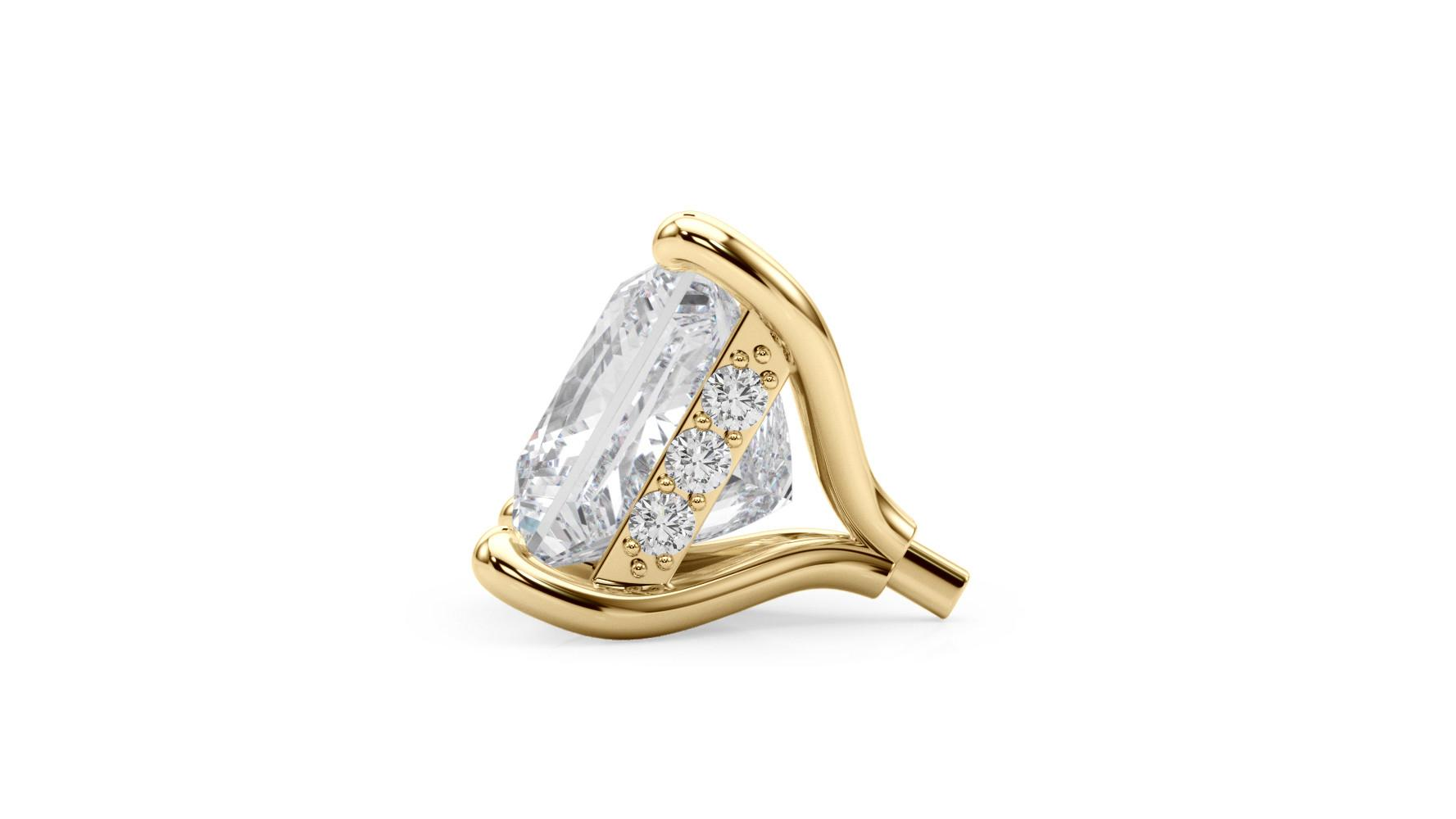
Durability, Security, and Maintenance
Basket settings offer help protect the diamond from side impacts and reduce the risk of the stone becoming loose or damaged, which means they are particularly beneficial for larger diamonds. Still, the design is more intricate, so it can make these settings more challenging to clean as dirt and debris build up relatively easily in the small crevices.
Prong settings are very secure, but they do not offer the same level of protection as basket settings. With fewer contact points and less metal surrounding the gemstone, the diamond is more exposed and vulnerable to impacts which means that, over time, the prongs can wear down or become loose. On the upside, the simpler design of prong settings makes them easier to clean and maintain, since the lack of additional metalwork means there are fewer places for dirt to get stuck.
Our Expert Take
While the visual differences between the prong setting and the basket settings seem relatively minor, there is a world of difference between the two. From aesthetics to maintenance, strength to weight, there are plenty of things to consider as you make a choice between the two. If maximising sparkle is the name of your game, then opt for the prong setting – it’s a certified classic of the engagement ring world, and will never go out of style.
Then again, the basket setting is almost as versatile and still achieves that timeless look. If you’re willing to sacrifice a tiny bit of light performance – so small, you probably won’t even notice – consider the basket.
9 Frequently Asked Questions: Basket Setting vs. Prong Setting
- Q: What is the main difference between a basket setting and a prong setting?
- A: A basket setting encases the lower part of the diamond in a metal “basket,” offering more protection, while a prong setting uses metal claws to hold the diamond, allowing more light to pass through and enhance its brilliance.
- Q: Is a basket setting more secure than a prong setting?
- A: Generally, yes. The basket setting provides additional support around the base of the diamond, reducing the risk of it becoming loose or falling out compared to some prong settings.
- Q: Does a prong setting allow more light into the diamond?
- A: Yes, prong settings typically allow more light to enter the diamond from various angles, which can enhance its sparkle and brilliance.
- Q: Are basket settings harder to clean than prong settings?
- A: Basket settings can trap more dirt and debris, potentially making them slightly more challenging to clean than prong settings.
- Q: Can the number of prongs affect the security and look of the diamond?
- A: Absolutely. More prongs generally mean increased security for the diamond, but they can also obscure more of the stone. Four prongs offer a good balance between visibility and security.
- Q: Which setting is better for an active lifestyle?
- A: A basket setting is often recommended for those with active lifestyles, as it provides more protection and is less likely to snag on clothing or other materials.
- Q: Are there significant price differences between these two settings?
- A: The price can vary depending on the complexity and material of the setting. Basket settings can be more intricate and thus potentially more expensive, but this is not always the case.
- Q: Can either setting be easily resized or adjusted in the future?
- A: This depends on the specific design and material of the ring. Generally, both settings can be resized, but it’s important to consult with a jeweler for the specifics of your ring.
- Q: How do I decide which setting is right for me?
- A: Consider factors like lifestyle, aesthetic preference, maintenance, and budget. It’s also important to think about how the setting complements the diamond’s shape and size.
Unveil the perfect ring with Jeweler AI – where Basket meets Prong in harmony. Start your journey to the ideal engagement ring now!
FOLLOW-UP GUIDE SERIES





